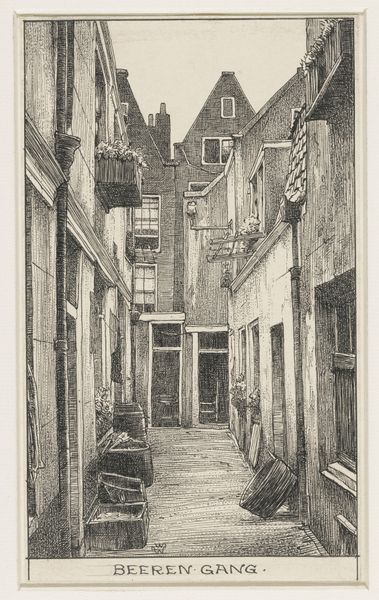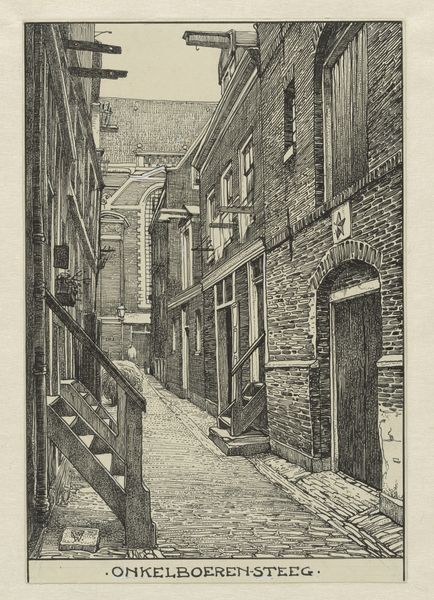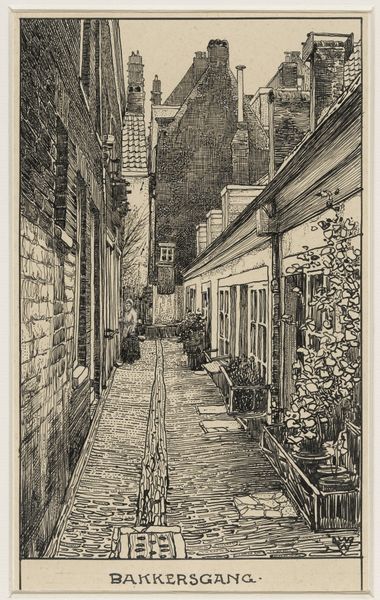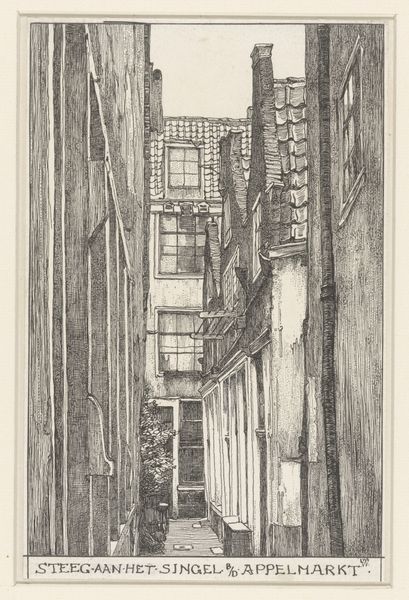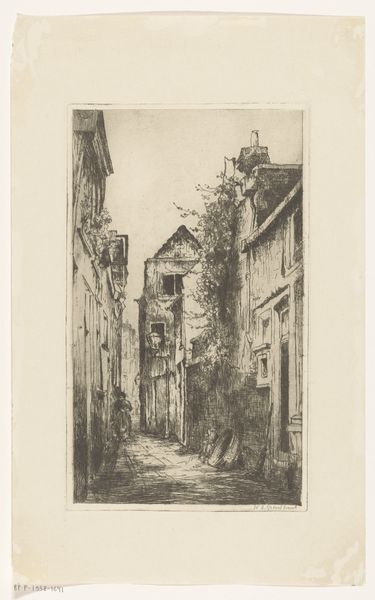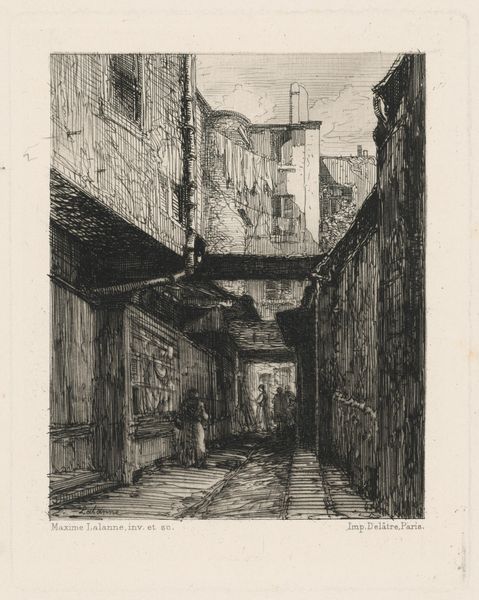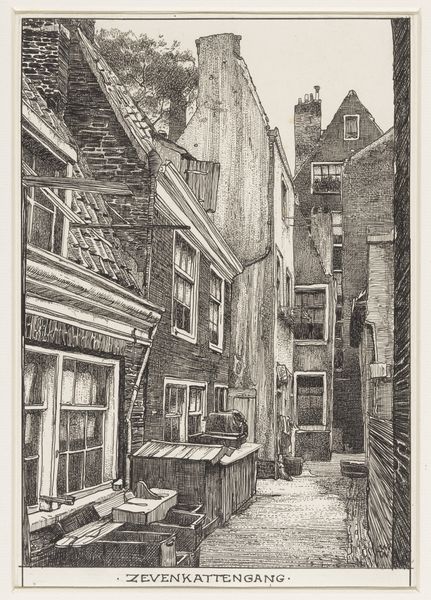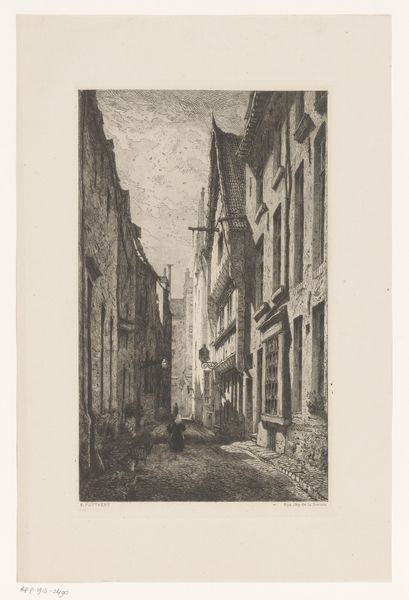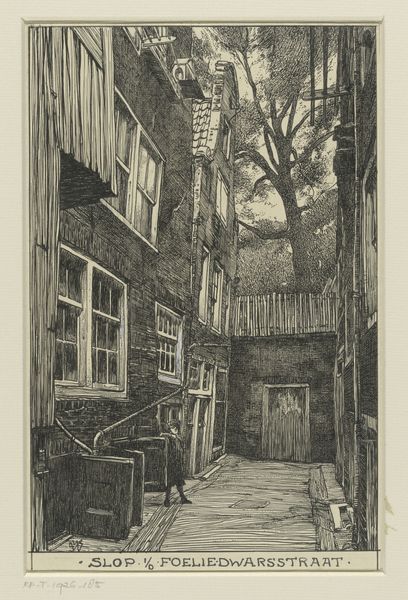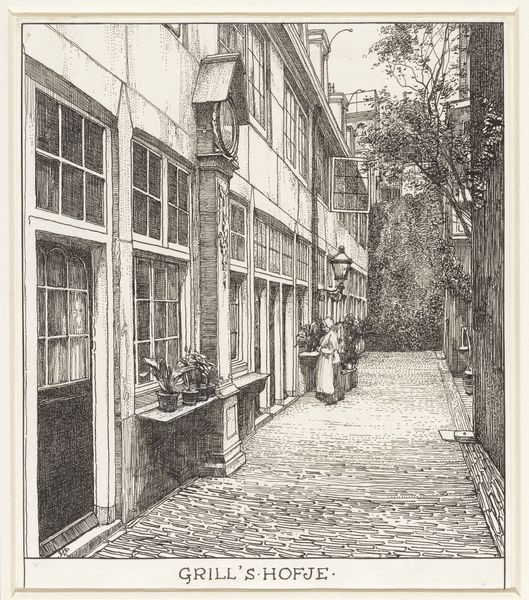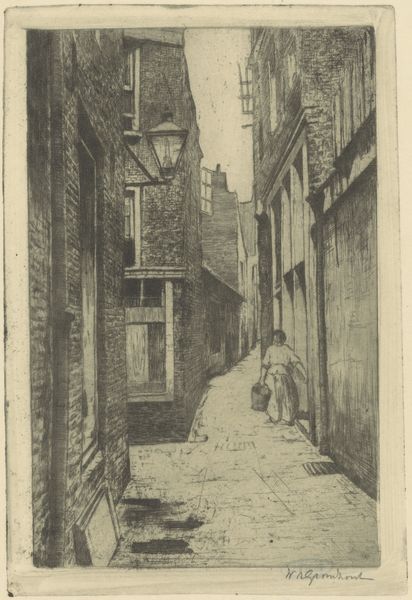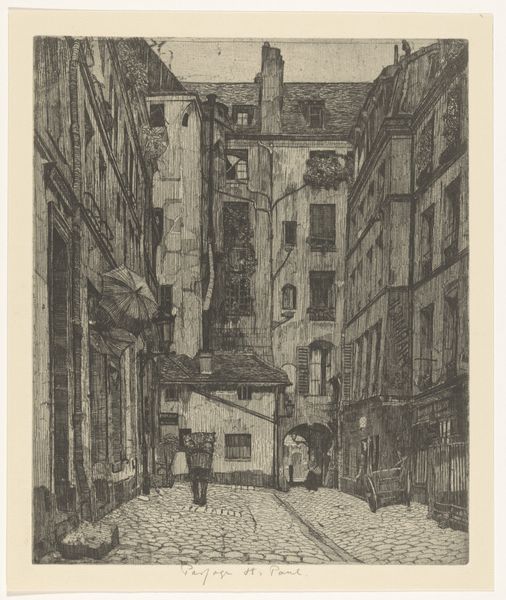
drawing, print, ink
#
drawing
# print
#
landscape
#
ink
#
cityscape
#
realism
Dimensions: height 192 mm, width 143 mm
Copyright: Rijks Museum: Open Domain
Editor: This is "Lage Erf te Amsterdam" by Willem Wenckebach, made between 1870 and 1926. It’s an ink drawing, a very detailed cityscape… it feels quite claustrophobic. What's your interpretation? Curator: Claustrophobic is a key word here. What we see is not just a street, but an erf, a yard or plot, suggesting private space increasingly enclosed. Wenckebach gives us a glimpse into the changing urban landscape, wouldn’t you agree? Editor: In what way exactly? Curator: Consider Amsterdam at the turn of the century – a rapidly industrializing city. Photography became popularized as well, right? This artwork isn't just documenting, but is reflecting on the effects of industrial growth upon its social landscape, the encroaching walls represent social classes closing in on each other and also growing divides between city residents. What are your thoughts? Editor: Ah, I see. The narrowness almost feels like social constraint, if that makes sense? And also that fact that there are layers above; a hierarchy. Curator: Precisely! And Wenckebach has chosen this alley for us to view. Alleyways have their own connotations to them that speak volumes about social hierarchy within a city. Its choice highlights the role of art in directing our gaze, isn’t it? What social structures is this meant to show? Editor: I guess he’s critiquing the feeling of confinement brought about by the city’s expansion… maybe he's inviting us to rethink what urban progress really means. Curator: Yes! It challenges viewers to consider the human cost of urbanization, as it becomes this kind of case study about wealth divides and lack of resources among social class. Editor: That’s made me look at the piece in a completely different light! I was focusing on its formal elements before. Curator: Often, artistic intentions reflect on the era and society they are meant to be about, it's an important facet to viewing works in general!
Comments
No comments
Be the first to comment and join the conversation on the ultimate creative platform.
